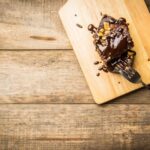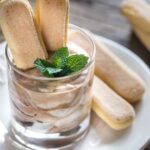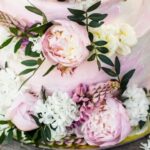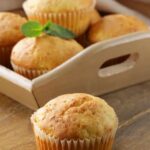Decorating a birthday cake is an essential part of any celebration, bringing joy and delight to both the birthday person and their guests. It is not only a way to make the cake look attractive, but also a means of personal expression and creativity. Whether it’s for a child’s birthday party or an adult’s milestone celebration, the decorations on a cake can set the mood and make the occasion truly memorable.
There are various types of birthday cake decorations that can be used to transform a plain cake into a work of art. From classic buttercream frosting to elaborate fondant designs, there are countless techniques to explore. Some decorators prefer using intricate piping patterns, while others may opt for edible flowers or handmade fondant sculptures. The possibilities are endless, allowing individuals to customize their cakes according to their preferences and the theme of the party.
To achieve stunning results when decorating a birthday cake, it is important to have the right tools at your disposal. Piping bags, spatulas, decorating tips, and stencils are just some of the essential tools that every decorator should have in their arsenal. Each tool serves its own purpose in creating different effects and designs on the cake. With these tools in hand, even beginners can create beautiful cakes that rival those made by professional bakers.
Types of birthday cake decorations
Decorating a birthday cake allows you to unleash your creativity and add a personal touch to the celebration. There are various types of cake decorations that you can utilize to make your cake look visually appealing and delicious. In this section, we will discuss different techniques such as frosting, fondant, and sprinkles that you can use to decorate your birthday cake.
One of the most common and versatile techniques for decorating a birthday cake is frosting. Frosting is typically made with powdered sugar, butter, and flavorings such as vanilla extract. It can be easily tinted with food coloring to create different shades and colors.
You can use a spatula or piping bag with various tips to create decorative designs on the cake’s surface. From simple swirls and dots to intricate patterns and flowers, frosting allows you to let your imagination run wild.
For those looking for a more polished and smooth finish, fondant is an excellent choice for cake decoration. Fondant is a sweet icing-like substance that can be rolled out into thin sheets and draped over the cake. It provides a sleek appearance and allows for more elaborate design possibilities. Fondant can be molded into shapes, folded or pleated like fabric, or embossed with patterns using tools specifically designed for fondant decoration.
Another popular type of decoration for birthday cakes is sprinkles. Sprinkles are small particles of colored sugar or candy that are used to add texture, sparkle, and pops of color to the cake’s surface. They come in various shapes and sizes including nonpareils (tiny balls), jimmies (cylindrical shapes), confetti (star-shaped pieces), or shimmering edible glitter. Sprinkles are an easy way to instantly elevate the look of your cake while adding a touch of fun and whimsy.
When it comes to decorating a birthday cake, the options are endless. Whether you choose frosting techniques like piping or painting, opt for the smooth elegance of fondant, or add a sprinkle of magic with edible decor, experimenting with different decorative techniques is an enjoyable way to make your cake stand out and create a memorable centerpiece for any birthday celebration.
Essential tools for cake decorating
To successfully decorate a birthday cake, you will need a set of essential tools specifically designed for cake decorating. These tools will help you achieve professional-looking results and make the process much easier. Here is a list of key tools that every cake decorator should have:
- Piping bags: Piping bags are used to pipe frosting or other decorative elements onto the cake. They come in various sizes and materials such as disposable plastic or reusable fabric. It’s best to have a selection of different piping bag sizes to accommodate various decorating techniques.
- Spatulas: Spatulas are versatile tools that are essential for spreading frosting, smoothing surfaces, and creating clean edges on the cake. Offset spatulas are particularly useful for applying an even layer of frosting without disturbing the crumbs.
- Decorating tips: Decorating tips, also known as pastry tips or icing nozzles, attach to the end of the piping bag and determine the shape and size of the decorations you create. There is a wide variety of tips available, including round tips for writing or outlining, star tips for creating borders or rosettes, and petal tips for making flower designs.
- Turntable: A turntable is a rotating platform that allows you to easily access all sides of the cake while decorating. It enables smooth and even application of frosting or decorations while helping you achieve consistent results.
- Cake leveler: A cake leveler is a handy tool for ensuring that your cakes have flat tops, which makes them easier to stack and decorate evenly. It consists of adjustable cutting wires that can be set at different heights to ensure precise leveling.
- Cake smoother: A cake smoother is used to create a smooth finish on frosted cakes by removing any imperfections or air bubbles from the surface. It typically has a flat edge that can be pressed against the sides and top of the cake while spinning it on a turntable.
- Offset scissors: Offset scissors are curved scissors with one shorter blade, specifically designed for cutting flower wires or trimming decorations. They allow for more precise cutting and better control of the scissors while working on delicate decorations.
- Cake stencils: Cake stencils are versatile tools that can be used to create intricate patterns or designs on the surface of the cake. Simply place the stencil on top of the cake and use an airbrush or dusting powder to achieve a professional-looking design.
Having these essential tools readily available will make your cake decorating process much smoother and enjoyable. Each tool serves a specific purpose, allowing you to achieve professional-looking results with ease. Investing in quality tools will not only enhance your cake decorating skills but also increase your confidence in creating beautiful and personalized birthday cakes.
Step-by-step guide on preparing the cake
Choosing the right cake flavor is the first step in preparing a birthday cake. It’s important to consider the preferences of the birthday person and any dietary restrictions or allergies. Some popular cake flavors include chocolate, vanilla, red velvet, and strawberry. Once you have decided on a flavor, gather all the necessary ingredients and follow a trusted recipe to ensure a delicious and moist cake.
After baking the cake, it’s crucial to level it properly before moving on to decorating. This is done by using a long serrated knife or a cake leveler to remove any dome-shaped top and create a flat surface. A leveled cake ensures even layers and easier stacking if you are planning on making a layered cake.
Next, allow the cake to cool completely before attempting any frosting or decoration. A hot or warm cake can cause the icing to melt off or become runny, ruining your efforts in decorating. Be patient and give your cake ample time to cool down before proceeding.
Once your cake is cooled, you can begin with the fun part of decorating. Starting with a clean serving plate or turntable, place your leveled cake layer on it for easy access while decorating. Applying a crumb coat is an essential step in creating a smooth base for your final frosting layer.
To do this, spread a thin layer of frosting over the entire surface of the cake to trap any loose crumbs. This will prevent crumbs from appearing in your final design.
Using a metal straight spatula or offset spatula, apply your final frosting layer evenly across the entire surface of the crumb-coated cake. You can use various techniques like spreading it smoothly for a sleek look or creating decorative patterns by swirling it with an icing comb or textured spatula.
By following these steps for preparing the cake, you will ensure that your foundation is solid and ready for creative decorations later on in the process. Remember to choose an appropriate flavor for the birthday celebration, level your cakes evenly, allow them to cool completely, and apply a crumb coat and final frosting layer for a smooth base.
With these guidelines in mind, you can move on to the exciting task of adding your personal touch and turning the cake into a masterpiece.
How to create a smooth cake base
When it comes to decorating a birthday cake, creating a smooth cake base is crucial for achieving a polished and professional finish. The key to this lies in properly frosting the cake using a technique called a crumb coat and ensuring that the final result is flawlessly smooth. With these tips, you’ll be able to create a beautiful canvas for your creative designs.
The Crumb Coat
The crumb coat is essentially a thin layer of frosting that acts as a base for the final layer of frosting. Its purpose is to seal in any loose crumbs, providing a solid foundation for the rest of your decorations. To apply the crumb coat, start by spreading a thin layer of frosting over the entire cake. Use an offset spatula to spread the frosting smoothly and evenly, making sure to reach all the nooks and crannies.
Once the crumb coat is applied, refrigerate the cake for about 20 minutes or until the frosting sets. This will help firm up the surface and prevent any loose crumbs from mixing into your final layer of frosting. Once chilled, you can proceed with adding your final layer of frosting without worrying about pesky crumbs getting in the way.
Creating a Smooth Finish
To achieve that perfectly smooth finish on your decorated birthday cake, there are a few techniques you can try. One method is known as “the Viva paper towel method”. After applying your final layer of frosting, gently press a clean Viva paper towel onto the frosted surface.
Begin smoothing out any imperfections by gently gliding your hand over the paper towel while holding it against the cake. The heat from your hand will help melt and smooth out any uneven spots.
Another technique involves using an offset spatula dipped in hot water. Dip your spatula into hot water and wipe it dry before using it to smooth out any bumps or ridges on your icing. The warm spatula will gently melt the frosting and allow you to create a seamless and polished surface. Remember to wipe off any excess water before each stroke for the best results.
By following these tips and techniques, you’ll be able to create a smooth cake base that serves as the perfect canvas for your creative designs. Taking the time to properly frost your cake using a crumb coat and achieving a flawlessly smooth finish will elevate your birthday cake decoration game to new heights, impressing both friends and family alike.
Creative techniques for cake decorating
When it comes to decorating a birthday cake, the possibilities are endless. There are numerous creative techniques that you can use to elevate the design of your cake and make it truly unique. In this section, we will explore different design options that you can experiment with, such as piping patterns, using stencils, or creating edible decorations.
Piping Patterns
Piping patterns involve using a pastry bag fitted with a decorating tip to create beautiful designs on the cake’s surface. This technique allows you to add intricate details and elaborate designs to your cake. You can use various nozzles to achieve different effects, such as creating ruffles, flowers, or even writing messages. Experiment with different piping techniques like rosettes, shells, or zigzags to add dimension and visual interest to your creation.
Using Stencils
Stencils provide an easy way to achieve professional-looking designs on your birthday cake. They come in a wide variety of shapes and patterns that you can choose from based on the theme or style of your cake. To use a stencil, simply place it on top of the cake and hold it steady while you sprinkle powdered sugar or cocoa powder over it.
Carefully remove the stencil to reveal a beautifully patterned surface. Stencils allow for precise designs while requiring minimal effort.
Creating Edible Decorations
Edible decorations offer unlimited creativity when it comes to adorning your birthday cake. From fondant figurines and sugar flowers to chocolate curls and candy melts, there are numerous options available for you to explore. You can mold fondant into various shapes and characters or use cookie cutters to create edible decorations in fun shapes like stars, hearts, or animals. Don’t be afraid to experiment with different types of edible decorations to add visual interest and showcase your creativity.
By incorporating these creative techniques into your cake decorating repertoire, you can take your birthday cake to the next level. Whether you choose to pipe patterns, use stencils, or create edible decorations, these design options will help you create a visually stunning and personalized cake that will impress both children and adults alike. Remember to consider the theme and preferences of the birthday celebrant as you select and experiment with these exciting decoration techniques.
Adding a personal touch
Adding a personal touch to a birthday cake can make it even more special and meaningful. There are various techniques that can be used to customize the cake with a birthday message, name, or age. By incorporating these personalized details, the cake becomes a unique centerpiece for the celebration.
One common technique for adding a personal touch is piping. Piping involves using a piping bag and decorating tip to write messages or draw designs directly onto the cake. This allows for precise control and the ability to create intricate patterns or lettering. Different types of icing or frosting can be used for piping, such as buttercream or royal icing, depending on the desired effect.
Another way to customize a birthday cake is by using edible decorations. These can include edible images or photographs that are printed onto sheets of sugar paper using food coloring. These images can then be placed on top of the cake or incorporated into its design. Edible decorations such as fondant shapes or handmade sugar flowers can also be added to create a more visually appealing and personalized look.
| Technique | Description |
|---|---|
| Piping | Using a piping bag and decorating tip to write messages or draw designs directly onto the cake |
| Edible Decorations | Using edible images, fondant shapes, or handmade sugar flowers to personalize the cake’s design |
Lastly, stencils can also be used to add customized details to a birthday cake. Stencils are available in various shapes and designs, allowing for easy application of patterns or monograms onto the cake’s surface. They can be used with powdered sugar, cocoa powder, luster dusts, or even colored sprays to create a visually striking effect.
When customizing a birthday cake, it’s important to consider the recipient’s preferences and the overall theme of the celebration. The colors, fonts, and decorations should reflect the person’s personality or interests. Additionally, it is essential to practice beforehand to ensure that the designs or messages are executed neatly and accurately.
Adding a personal touch to a birthday cake not only makes it more attractive but also shows thoughtfulness and effort. It can turn a regular cake into a heartfelt gesture that leaves a lasting impression on both the celebrant and the guests.
Styling and presentation tips
When it comes to decorating a birthday cake, the styling and presentation are crucial in creating that “wow” factor. The way a cake is styled and presented can greatly enhance its overall appearance and make it stand out on the dessert table. Here are some tips to help you achieve maximum impact with your decorated birthday cake.
Firstly, consider the backdrop or serving surface for your cake. Choosing a solid-colored tablecloth or cake stand will provide a clean and elegant background that allows the colors and design of the cake to pop. You can also use decorative props like fresh flowers, ribbons, or themed accessories that complement the theme of the party or the design of the cake.
Next, think about how to display your cake in a visually appealing way. Depending on the size and shape of your cake, you may opt for different options such as using a pedestal cake stand, tiered stands, or even creating an illusion by stacking boxes covered in coordinating paper or fabric to elevate your cake. Consider incorporating height variations for added visual interest.
Lighting is another important aspect of presenting your decorated birthday cake. Natural light is always flattering, so consider setting up your dessert table near a window if possible. If natural light is not available, ensure that there is sufficient artificial lighting illuminating the cake from different angles to highlight its features and textures.
Lastly, don’t forget about adding finishing touches to complete the presentation. A sprinkle of edible glitter, powdered sugar dusting, or fresh fruit garnish can elevate the overall look of your decorated birthday cake. Additionally, consider providing serving utensils, such as a beautiful cake server or individual plates and forks wrapped in coordinating napkins for convenience and an added touch of elegance.
By paying attention to these styling and presentation tips, you can ensure that your beautifully decorated birthday cake steals the show at any celebration. Remember to have fun with it and let your creativity shine through.
Troubleshooting common cake decorating issues
One of the challenges that cake decorators often face is achieving a smooth and flawless finish on their cakes. One common issue is crumbs getting mixed into the frosting, resulting in a textured appearance. To avoid this, it’s important to apply a crumb coat before frosting the cake.
A crumb coat is a thin layer of frosting that helps seal in any loose crumbs and provides a smooth foundation for the final coat of frosting. To achieve a perfect crumb coat, use an offset spatula to spread a thin layer of frosting over the entire cake, making sure to fill in any gaps or uneven areas.
Another common issue is air bubbles forming in the icing while decorating the cake. This can result in small holes or blemishes on the surface. To prevent air bubbles, make sure to not whip the buttercream or frosting too vigorously as it incorporates air into it. Instead, gently mix and fold until you achieve a smooth consistency. Additionally, tapping the cake gently on the countertop after applying each layer of frosting can help release any trapped air bubbles.
Uneven or lopsided layers can also be problematic when it comes to decorating birthday cakes. To ensure even layers, always level your cakes after they have cooled completely using a serrated knife or cake leveler. If you find that your layers are still uneven even after leveling, you can use extra frosting between layers to fill in any gaps and create an even surface.
By addressing these common cake decorating issues with simple solutions and tips, decorators can overcome challenges and achieve professional-looking results. It’s important to remember that practice makes perfect and even experienced decorators encounter difficulties from time to time. The key is to approach these challenges with patience and creativity, turning them into opportunities for improvement and learning. With dedication and perseverance, anyone can become skilled at troubleshooting common cake decorating issues and creating beautiful birthday cakes.
Conclusion
In conclusion, the art of decorating a birthday cake is not only important but also an incredibly enjoyable experience. Throughout this article, we have explored various techniques and tools that can be used to create stunning cake decorations. From frosting and fondant to sprinkles and piping patterns, there are endless possibilities for creating a visually appealing cake.
We have also discussed the essential tools needed for cake decorating, such as piping bags, spatulas, and decorating tips. These tools are crucial in achieving professional-looking results. It is important to invest in high-quality tools to ensure precision and ease while decorating.
Additionally, we have provided a step-by-step guide on preparing the cake itself. From choosing the right flavor to baking and cooling it properly, these steps lay the foundation for a beautifully decorated cake. We have also highlighted the importance of creating a smooth cake base through proper frosting techniques like applying a crumb coat.
Furthermore, we explored creative techniques for cake decorating, such as using stencils or creating edible decorations. Adding a personal touch to the cake by customizing it with a birthday message or name is also an excellent way to make it even more special. Styling and presentation tips were offered to help showcase the decorated birthday cake in the most appealing manner.
Lastly, we addressed common mistakes and challenges that may arise during the cake decorating process and provided solutions and tips for rectifying them. It is important not to get discouraged if things don’t go perfectly at first; practice makes perfect.
Decorating a birthday cake is truly an art form that brings joy and satisfaction to both decorators and those who enjoy the final result. With proper techniques, tools, and creativity, anyone can create a masterpiece that will leave everyone amazed at their talent. So grab your apron and enjoy the process of transforming a simple baked treat into a stunning centerpiece for any celebration.

Welcome to my blog about home and family. This blog is a place where I will share my thoughts, ideas, and experiences related to these important topics. I am a stay-at-home mom with two young children. I hope you enjoy reading it! and may find some helpful tips and ideas that will make your home and family life even better!





